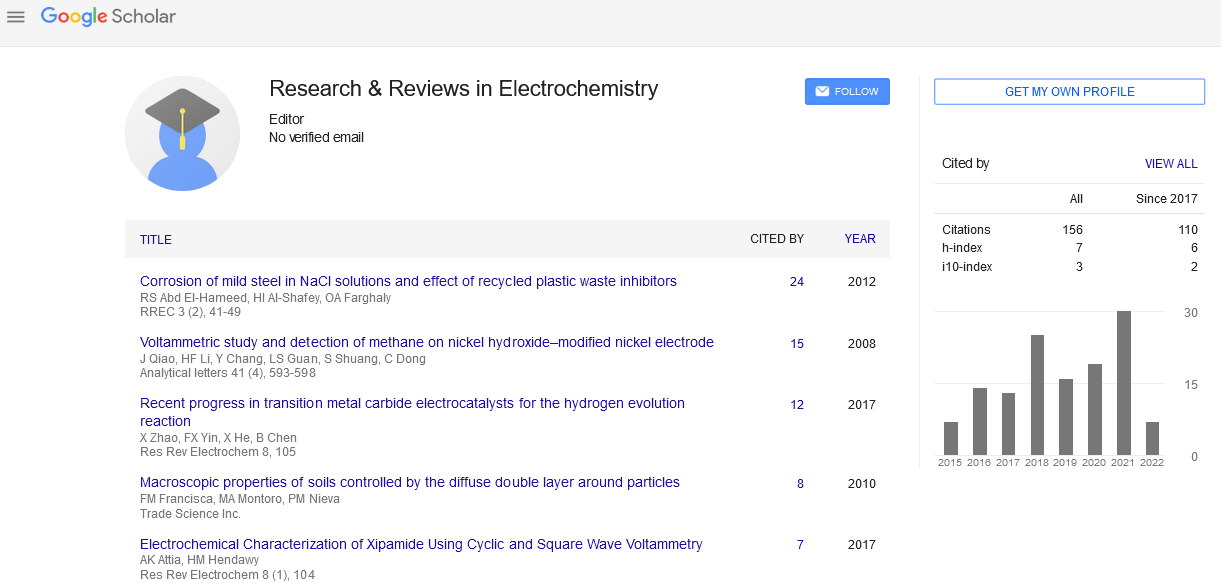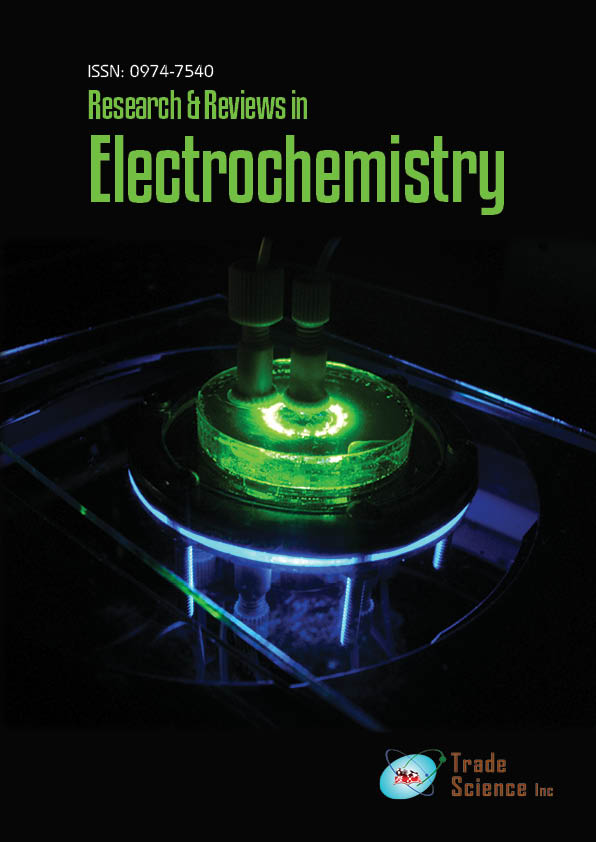Short communication
, Volume: 11( 1)Porous Hydrogen Substituted Graphyne as a promising Anode for Lithium-Ion Batteries
- *Correspondence:
- Csaba Endrodi
Department of Chemistry, 57 Ullswater Avenue West End Southampton Hampshire UKS018
E-mail: publisher@tsijournals.com
Received: March 05, 2021 Accepted: March 20, 2021; Published: March 30, 2021
Abstract
Porous hydrogen substituted graphyne (HsGY) has been considered as a promising candidate for anode material due to its excellent electrochemical properties. HsGY monolayer and bilayer have outstanding mechanical properties, including substantial critical stresses (>25 percent) and strong in-plane stiffness (>200 N m), according to mechanical experiments. The bilayer HsGY has a rigidity of 400.27 N m, which is extremely high. Li adsorption is stronger on bilayer HsGY than on monolayer HsGY. Both monolayer and bilayer HsGY could be attractive anode materials for lithium-ion batteries because of their advantages, which include large critical strain, high mechanical stiffness, strong adsorption, low diffusive energy barrier, and high charge capacity.Keywords
Graphene; Porous hydrogen; Electrochemical properties
Lithium Ion Batteries
Recent rapid development of portable electronics, mobile communication devices and electric vehicles, Li-ion batteries (LIBs) have attracted great attention due to their high safety, light weight and long lifespan. Ultrathin LIBs, among the many LIBs, have a lot of potential in portable electronic devices including integrated circuit smart cards, wearable health gadgets, roll-up displays, and flexible solar panels. LIBs typically have two electrodes:an anode and a cathode. Because the anode materials qualities impact essential LithiumIon Battery (LIB) attributes such cycling life, capacity, and charge/discharge rate, choosing the right anode materials is critical. Under mechanical stress, traditional anode materials, which are primarily comprised of graphite and oxides, can readily split or delaminate. Due to their exceptional electrochemical characteristics and distinctive shape, which allows for numerous insertion channels and quick metalion diffusion, two-dimensional (2D) materials have been widely researched as anode materials for rechargeable LIBs. Carbon-based 2D materials are the most extensively employed in metal-ion batteries due to their abundance, affordability, and chemical stability. Graphene exhibits good electrochemical performance and lengthy cyclability as a typical member of carbon-based 2D materials. The discovery of Graphynes (GYs), which have homogeneous Nano pores and a low atomic density, offers a novel lithium storage option. GYs are made up of sp and sp2 C atoms that have been hybridized. -GY, -GY, -GY, Graphdiyne (GDY), and -GDY are all members of the GYs family. The porous hydrogen substituted GY (HsGY) Nano sheets, a new member of the GYs family, were recently synthesized utilising a simple bottom-up synthetic technique. The HsGY-based electrode has a high initial Li charge capacity of 1640 mA h under 50 mA g1, and the reversible capacity of 1550 mA h g1 can be stabilised. The electron–ion interactions were calculated using a projectoraugmented plane wave potential, while the electron exchange–correlation interactions were represented using an extended gradient approximation in the form of the Perdew, Burke, and Ernzerhof (PBE) functional. For all simulations, the van der Waals (vdW) interactions (DFT-D2 technique of Grimme) were used. The kinetic energy limit was set at 520 eV. For structural optimization, a k-mesh was used.
For all simulations, the Van Der Waals (VDW) interactions (DFT-D2 technique of Grimme) were used. The kinetic energy limit was set at 520 eV. For structural optimization, a k-mesh of 551 was used. Per layer, the formation energies are 190.65, 240.87, 227.70, and 195.17 meV. The most advantageous structure is the AB-stacking bilayer HsGY, with the lattice constants a=b=11.915.Using density functional theory calculations, the adsorption and diffusion characteristics of lithium on monolayer and bilayer HsGY were determined. The monolayer and bilayer HsGY are discovered to exhibit significant critical stresses and strong in-plane stiffness. Structural deformation will occur during the lithiation cycle, however, lithiated HsGY can well maintain the layered structure. When Li atoms bind to monolayer and bilayer HsGY, the binding energies are high, and the adsorption interaction between lithium and bilayer HsGY is stronger than in monolayer HsGY. The charge capacities of monolayer and bilayer HsGY are 3378 and 2895 mAhg1, respectively.

